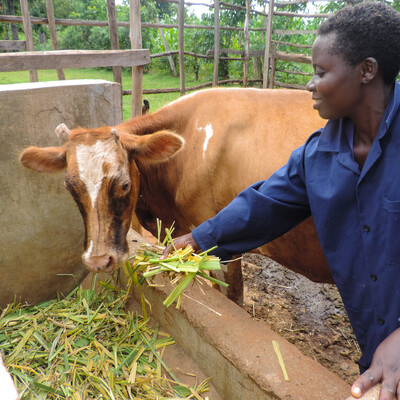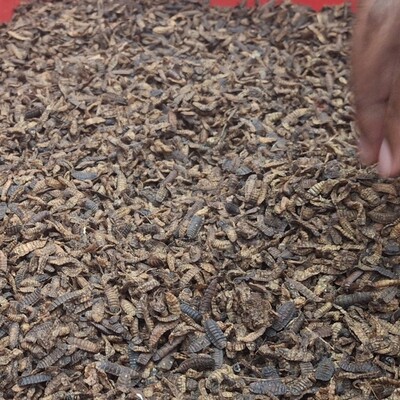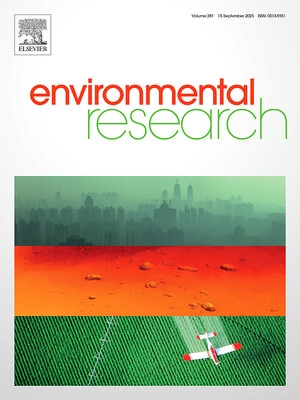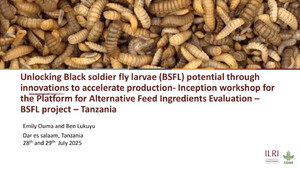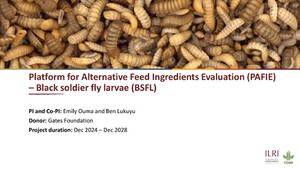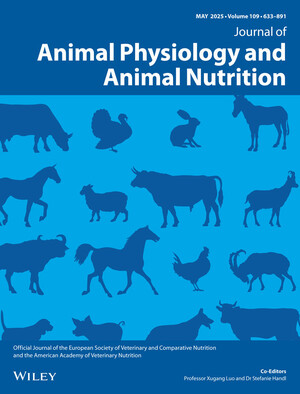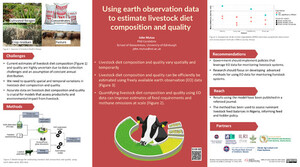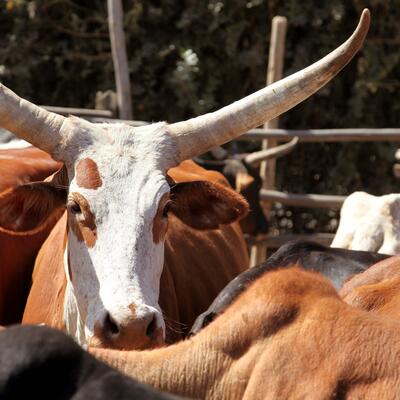
FeedCalculator app and Good Manufacturing Practices and Quality Assurance Handbook to improve animal feed in Uganda
A new publication by the International Livestock Research Institute (ILRI) explains how farmers can improve smallholder pig enterprises by producing quality feed.
Targeting small-scale farmers and pig feed-makers, the Good Manufacturing Practices and Quality Assurance Handbook contains information on key stages of feed-making that small and medium feed mills can use to improve quality. It also includes guidelines on how to use the free FeedCalculator app; a formulation and feed intake estimation and information tool.
Pig production is an important economic activity in Uganda with high potential for increasing the household incomes of both rural and urban smallholder farmers. According to the Uganda Bureau of Statistics, there has been a consistent rise in demand for pork over the past few decades, resulting in a rapid growth of the pig sector. From 1980 to 2018 the number of pigs in the country rose from 0.2 million to 4.1 million (UBOS, 2018).
Like other livestock in Uganda, pigs contribute to people’s livelihoods through numerous channels including cash and income, animal-source foods, employment, transport, draft power, manure, savings, insurance, social status and more. But these contributions are constrained by factors including diseases, the high cost of feeds, and unstable markets. There is also limited information for different actors in the sector, particularly farmers and feed millers.
For many farmers, identifying a good quality feed source is a continuous activity, with many moving in vain from one supplier to another. The Ugandan feed industry is dominated by small- and medium-scale feed mills, and majority of feed ingredient store owners and managers are unskilled in animal feed production. The situation is compounded further by the relatively free policy nature of the feed industry; enabling unregulated entry and practice.
The handbook is the result of a study involving 40 feed mills, which were monitored and nurtured on adoption of good manufacturing practices, quality assurance actions, and the FeedCalculator app under the five-year MorePork project II. The project sought to increase pig productivity for smallholders in districts of Mukono, Masaka, Mpigi and Wakiso. ILRI and partners–Single Spark B.V/Single Spark SMC Limited and Makerere University–designed and implemented activities to spur adoption of the proposed interventions.
The FeedCalculator app has been downloaded from Google Play store by over 6,000 people, including farmers, feed millers and stockists in Uganda. Fast adoption of the app, leading to good manufacturing practices and quality actions, and testimonies about the change in feed quality have been reported and documented in ILRI research publications. Among feed millers, extension service providers, farmers and other users, the most appreciated attributes of the app are the provision of better advice on feeding and the fact that farmers are empowered to make their own feed. Farmers also testified about reduced feeding costs and subsequent increased farm profitability.
‘We recommend equipping feed millers and local extension service providers with appropriate and easy to use resource materials on animal feeding and feed production; building the capacity of local government extension service providers, feed millers and stockists, among others. Accreditation of feed distribution staff and certification of feed mills that meet the minimum quality standards will play a key role in sustaining the impact of this research,’ said Ben Lukuyu, a feed specialist involved in the research and ILRI Uganda country representative.
Based on feedback from users, the FeedCalculator app is being improved to include more locally available feed resources like black soldier fly products, crop residues and by-products, breadcrumbs, and many others. This will be followed by nationwide training of extension service providers on how to use the FeedCalculator app as well as how to train and nurture farmers, breeders, feed millers and feed stockists.
Read more:
https://hdl.handle.net/10568/117288
https://hdl.handle.net/10568/117270
https://hdl.handle.net/10568/115630
https://www.ubos.org/wp-content/uploads/publications/05_2019STATISTICAL…







